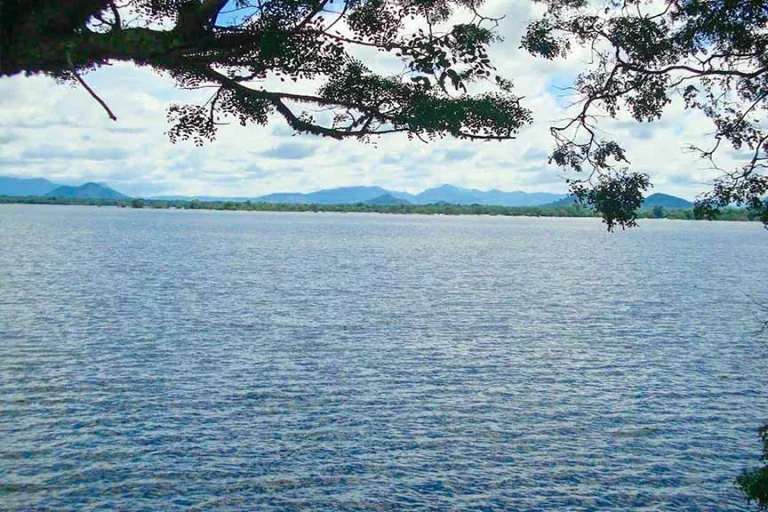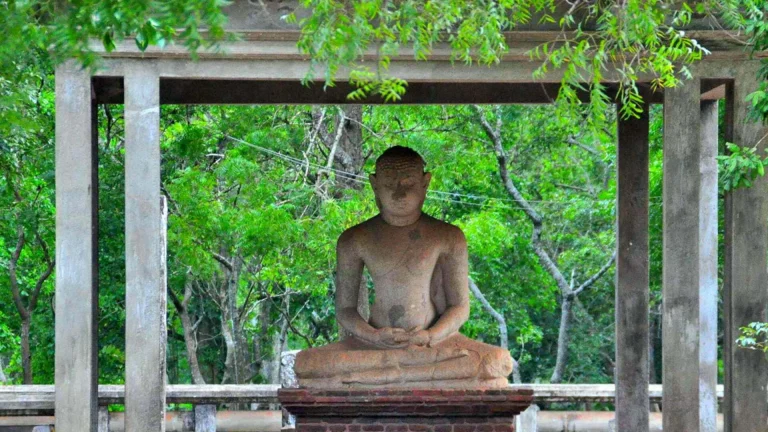All Provinces
Exploring the Abhayagiri Dagoba: A Jewel of Anuradhapura, Sri Lanka
The ancient city of Anuradhapura, one of the most sacred cities in Sri Lanka, is home to some of the country’s most treasured historical and religious monuments. Among its iconic landmarks is the Abhayagiri Dagoba, a monumental stupa that captures the grandeur of Sri Lankan architecture and the spiritual depth of Buddhist traditions. If you’re planning to visit Sri Lanka, a trip to this ancient marvel is a must for any history enthusiast or traveler seeking a glimpse into the island’s glorious past.
History of Abhayagiri Dagoba
The Abhayagiri Dagoba was built in the 1st century BC by King Valagamba (Vattagamini Abhaya) after reclaiming his throne from South Indian invaders. The word “Abhayagiri” is derived from “Abhaya” (meaning “fearless” or “protection”) and “giri” (meaning “mountain”), reflecting the king’s triumph and his gratitude for Buddhist monks who supported him during his exile.
Originally standing at over 100 meters (328 feet) tall, it was one of the tallest monuments in the ancient world. Over time, the stupa has weathered natural disasters, but even in its present state, it remains an awe-inspiring structure, towering at around 75 meters (246 feet).
The Abhayagiri Monastery, which grew around the stupa, became one of the largest and most influential monastic complexes in Sri Lanka. At its peak, it housed thousands of monks and was a renowned center of Buddhist learning, art, and culture.


The Architectural Marvel of Abhayagiri
The Abhayagiri Dagoba is not just an architectural feat; it’s a symbol of religious devotion. The massive brick structure, shaped like a bell or bubble, is representative of traditional Sinhalese stupa architecture. Surrounded by lush greenery and stone terraces, the stupa is a picturesque sight for any visitor.
When walking around the dagoba, you’ll find remains of stone pillars, moonstones (semi-circular carved stones), and guard stones, all showcasing the intricate craftsmanship of ancient Sri Lankan artisans. Abhayagiri was more than just a religious center; it was a hub for scholars, engineers, and artists, influencing the cultural landscape of ancient Anuradhapura.
The Spiritual Significance
For Buddhists, Abhayagiri holds immense spiritual importance. It is believed that relics of the Buddha were enshrined within the dagoba, making it a major pilgrimage site. The monastery that surrounded the stupa also fostered the development of different schools of Buddhist thought, including Mahayana Buddhism. Pilgrims and tourists alike often feel a deep sense of reverence as they walk the grounds, immersing themselves in the sacred atmosphere of the site.
Even today, many locals visit the stupa to offer prayers, light oil lamps, and lay flowers in respect to the Buddha. The rhythmic chanting of monks in the background creates an otherworldly serenity, making it an unforgettable experience.
Visiting Abhayagiri Dagoba: What You Need to Know
Best Time to Visit: The ideal time to explore Abhayagiri is early in the morning or late afternoon when the temperatures are cooler. December to March is the best period to visit Anuradhapura to avoid the intense summer heat.
Location: The Abhayagiri Dagoba is located within the sacred city of Anuradhapura, about 206 km north of Colombo. The site is part of the UNESCO World Heritage-listed Anuradhapura archaeological site.
Opening Hours: The stupa and surrounding ruins are open from 7:00 AM to 9:00 PM daily.
Entry Fee: Foreign tourists are required to pay an entry fee, typically part of the larger Anuradhapura Archaeological Site ticket. Prices are subject to change, so check before your visit.







VisitinHow to Get to Abhayagiri Dagoba
Anuradhapura is well-connected to major cities in Sri Lanka by road and rail. From Colombo, it takes about 4-5 hours by car or bus. You can also take a train from Colombo Fort Railway Station to Anuradhapura, which offers a scenic route through the countryside.
Once in Anuradhapura, you can either rent a bicycle or hire a tuk-tuk to explore the vast archaeological site. Be sure to wear comfortable clothing and carry plenty of water, as you’ll be doing a lot of walking in the tropical heat.
Nearby Attractions
While visiting Abhayagiri, don’t miss out on the other attractions within the sacred city of Anuradhapura, such as:
- Ruwanwelisaya: Another massive stupa, considered one of the most sacred stupas in Sri Lanka.
- Jetavanaramaya: Once the tallest stupa in the world, and a marvel of ancient engineering.
- Sri Maha Bodhi Tree: A sacred fig tree believed to be a sapling of the tree under which Buddha attained enlightenment.
- Isurumuniya Temple: Famous for its rock carvings, especially the “Isurumuniya Lovers” sculpture.
Conclusion
The Abhayagiri Dagoba is a treasure trove of history, architecture, and spirituality, offering a unique glimpse into Sri Lanka’s rich cultural heritage. Whether you are a history buff, a photography enthusiast, or a spiritual traveler, the timeless beauty of Abhayagiri will leave you captivated.
For travelers exploring the wonders of Anuradhapura, Abhayagiri Dagoba is a must-visit destination that stands as a symbol of Sri Lanka’s proud Buddhist legacy and historical splendor.
See More Tourist Places Click Here

















This piece is a quiet symphony of thought — its rhythms are soothing, but its meaning is profound.